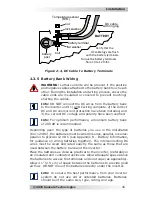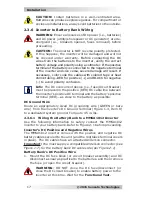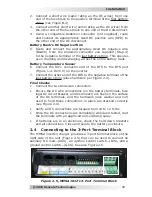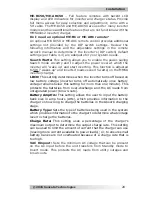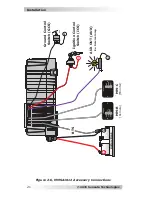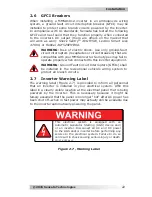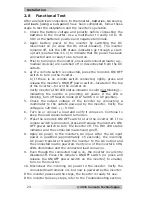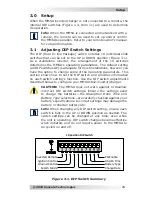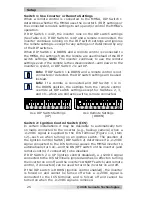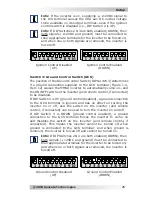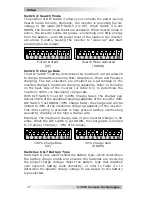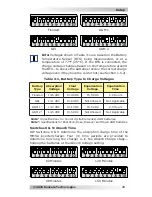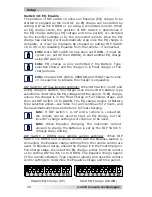
© 2015 Sensata Technologies
Installation
14
Table 2-1, Recommended DC Wire/Overcurrent Device
Inverter Model
MMSA1012
Maximum Continuous
Current
1
133 amps
DC Grounding Electrode
Wire Size
2
#6 AWG
(13.3 mm
2
)
Minimum DC Wire Size
3
(75
°
C rating in free air)
#2 AWG
(33.6 mm
2
)
170 amps
Maximum DC Fuse Size
4
150 amps with
time delay
Increased
size for
longer
distance
5 to 10 feet =
#2 AWG
(33.6 mm
2
)
10 to 15 feet =
#1 AWG
(42.4 mm
2
)
Note
1
– Maximum Continuous Current is based on the inverter’s continuous
power rating at the lowest input voltage with an ineffi ciency factor.
Note
2
– Per the NEC, the DC grounding electrode conductor can be a
#6 AWG (13.3 mm
2
)
conductor if that is the only connection to the grounding
electrode and that grounding electrode is a pipe, rod, or plate electrode.
Note
3
– Wire size is based on the requirements needed to increase effi ciency
and reduce stress to the inverter.
Note
4
– The next larger standard size overcurrent device may be used if
the de-rated cable ampacity falls between the standard overcurrent devices
found in the NEC.
If the distance from the inverter to the battery is >5 feet (1.5 m),
the DC wire will need to be increased. Longer cable distances affect
the performance of the inverter. See the lower part of Table 2-1 to
determine the minimum DC wire size needed for various distances
greater than 5 feet—based on your inverter model.
DC Wire Size Exception:
In an OEM RV application, smaller DC
wire (with appropriate overcurrent protection) may be used if the
inverter will only be connected to a dedicated load, and the inverter
and dedicated load have been thoroughly tested and sold together
by the OEM as a complete system.
2.3.2 DC Overcurrent Protection
For safety reasons and to comply with electrical code regulations, DC
overcurrent protection must be provided as part of the installation.
The DC overcurrent protection device must be installed in the
positive DC cable line, it can be a fuse (with disconnect switch) or
a circuit breaker and must be DC-rated. It must be correctly sized

















